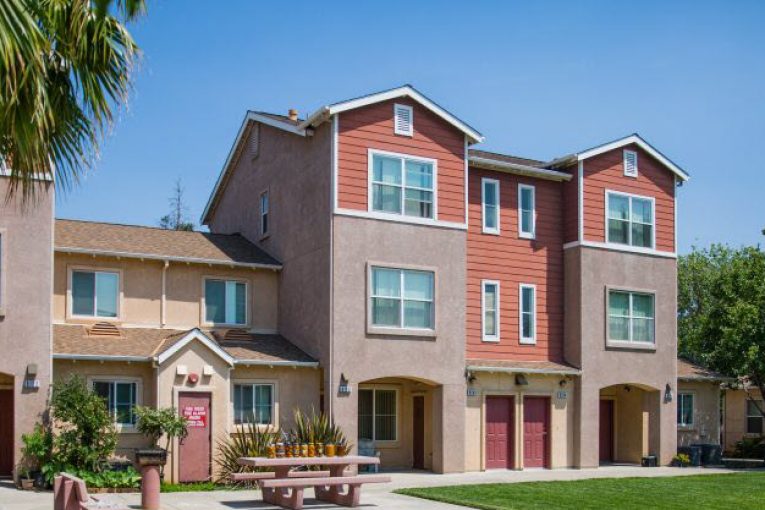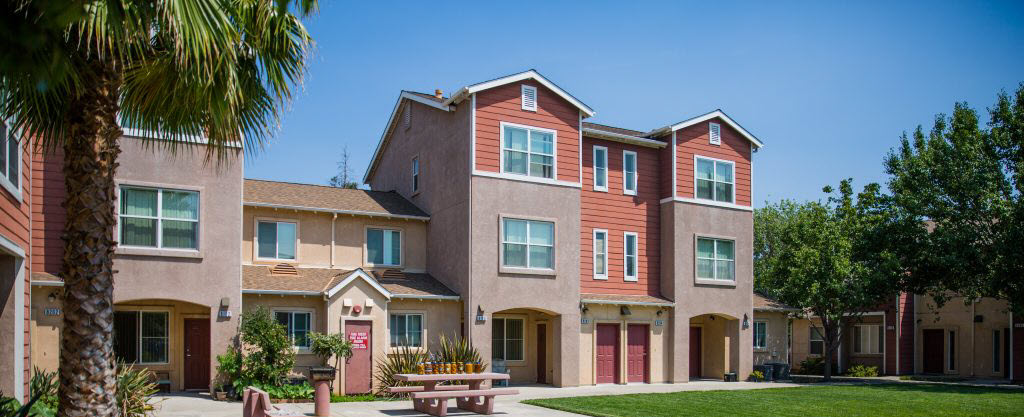
 By Vanguard Staff
By Vanguard Staff
Sacramento, CA – In March, a state audit report found that the state has failed to act effectively to produce affordable housing necessary to alleviate the state’s housing crisis.
“The rapid creation of affordable housing is critical because more than 1.4 million low-income California renter households lack access to affordable housing,” Tilden wrote in a letter Tuesday to the governor and other state leaders.
Acting State Auditor Michael Tilden in a letter this week to the Governor and leaders of the legislature wrote, “Although we found that the executive order has proven effective in its intent, and we estimate that it could ultimately make way for more than 32,000 housing units, our evidence shows that DGS could accelerate the process  by which it makes properties available.”
by which it makes properties available.”
Following that report, Senator Bill Dodd on Tuesday announced legislation that would assist the creation of affordable housing in California by identifying excess state property that could be used for development, advancing earlier initiatives from Governor Gavin Newsom to address the state housing crisis.
“The rapid creation of affordable housing is vital to Californians, who are experiencing increased homelessness and instability because of extreme prices,” Senator Dodd said. “To accelerate construction of these much-needed units, we must continue to prioritize the use of excess state land. My bill will ensure we continue to identify which properties are available and get these projects going as economically and efficiently as possible.”
The state’s need for affordable housing is significantly outpacing its production, which is negatively affecting Californians. According to a report from the California Housing Partnership, 1.4 million low‑income California households lacked access to affordable housing last year. Despite California’s need for affordable housing, the state has annually fallen 100,000 units short on its affordable housing creation goals for many years.
Governor Newsom made progress with his 2019 executive order that first called for the use of surplus state land for affordable housing. On his order, the Department of General Services reviewed 44,000 state properties and found 92 of them suitable for affordable housing. However, as of March of this year, only 19 of the properties have been offered by the department for development. A recent California State Auditor report found that process could be accelerated.
SB 561 would speed development, codifying the governor’s order and requiring transparency and reporting on the long-term leasing of surplus land to the Legislature. In addition, it would incorporate key recommendations from the State Auditor’s report to facilitate the identification of additional excess state property and the ultimate creation of more affordable housing.






Interesting video I happened upon last night, which shows that there is no fundamental housing shortage.
https://www.youtube.com/watch?v=tsKCjQqMtl4
Please do not do this. If you post a link, explain it in your own words. Explain the expertise of the producer. Describe how it is relevant to the topic. We don’t want comments that are just “I saw this video.”
I did add a comment, stating that the overall finding is that there is no fundamental housing shortage.
But I’ll add more detail, since you asked. (It’s harder to do so when it’s in the form of a video, vs. a document.) But overall, the video states that the government created the situation via the foreclosure and eviction bans, low interest rates, and the resulting “wealth effect” which encouraged 2nd and 3rd home purchases, as well as investor purchases.
(On a related note – not in the video – there’s an unusually large percentage of “empty” housing units in Florida, despite having one of the fastest-rising housing prices in the country. One can only speculate as to the reason for that – e.g., 2nd homes, investor properties, ?)
The number of housing units per overall population is in line with historical averages, and the number of people per household is the lowest it’s ever been. There’s a similar point made regarding the number of jobs, relative to the number of housing units.
The percentage of households with children is at its lowest point ever, which doesn’t bode well for the future of the housing market.
Data is used to back all of this up, in a very effective manner.
Housing prices, adjusted for inflation, are higher than they were right before the crash in 2006.
This is a very different scenario than what we normally hear.
First of all, the video looks like something out of QAnon
But second, the idea that the housing crisis was created out of bans on eviction and foreclosure is stupid because as you well know the housing crisis preceded the pandemic and those policies.
Moreover, even if he is right that the government helped to create the housing crisis, which I don’t doubt in general, that doesn’t mean that there isn’t a housing crisis, it just addresses what the cause is.
Attacking the messenger is a tried-and-true political tactic. I believe this guy is just one of the many real estate analysts who produce videos on YouTube. But again, the data is the data.
I don’t, in fact, “know that”. Nor have you have you even defined what that means, or provided any data or analysis at all.
What this means is that there isn’t an actual housing shortage.
Also, since the Vanguard article refers to the state audit, here’s a different “take” on that. (The similarity to the video is that it shows that the claimed shortage is not based upon reality.)
https://www.msn.com/en-us/money/realestate/what-if-california-s-housing-crunch-doesn-t-really-exist/ar-AAWA1A0
I wouldn’t know, I’ve never watched a QAnon video.
How do you know Craig Ross?
I watched the video and some good points were made and were backed by statistics.
For instance, there are currently only 2.4 people per housing unit in America, the lowest percentage ever. Indicating that maybe the housing crisis is somewhat contrived.
Housing occupancy density in Davis has been increasing. I’m not really interested in what is happening in other housing markets in the US and don’t consider it very relevant to our housing market.
You might not be interested, Don – but the Vanguard article refers to the state as a whole. And for that matter, California is not an island in the U.S. housing market, either.
Nor is Davis an island within the region or state.
Your comment is extremely myopic, and demonstrates a fundamental lack of understanding (or willingness to learn, for that matter).
And yet, you made that comment AFTER demanding that I explain the video in the first place!
Any increased density in Davis is likely due entirely to UCD (and its failure to plan for its own students). (Of course, that subject has already been discussed at length.)
I strongly suggest you avoid making comments like this.
That’s your prerogative, but maybe others care.
The question is more about relevance than prerogative it seems.
Certainly relevant to the Vanguard article, in regard to the state audit.
As well as the general, unfounded “housing shortage” comments in the media (not just limited to the Vanguard). Often times, general claims of “housing shortages” are used to justify housing proposals in specific locations, as well. (In fact, that’s usually the way it works.)
As noted in the video, it seems likely that these claims of housing shortages are arising from interests that have a stake in creating an impression of “housing shortages”, which are then broadcast by media without any analysis.
Again, look at the article I posted (regarding that audit), as well. I’ll repeat a pertinent passage, here:
Yes, a huge driver of the population slowdown is housing costs, so if you fail to build sufficient housing, drive up the costs, fewer people will move to the state. The problem with that solution is obvious and ultimately self-defeating. But you have posted about this time and time again without acknowledging the inherent problem with the argument.
Is that a bad thing? How crowded do you want California to get?
Craig… Spot on!
[edited]
And that poster also asserted,
Therefore, ‘no problem’… any folk looking for housing in Davis, Yolo County, CA can just move to FL… problem solved! Or Sheridan, WY, Laurel MT, etc., where housing prices are pretty inexpensive…
Good post, Craig R… sincerely… some folk need to be “called out” when they try to dismiss an issue by obfuscation…
I believe that the ‘housing crisis’ is real for many, overblown by some, and dismissed ‘out of hand’ by those “who have theirs”, and don’t give a scintilla about others. Yet the extremist views, either side, predominate the discussion…
[edited]
I believe you’re referring to wealth distribution, a different issue. (This is also alluded to in the video, though not directly.)
The article is about affordable housing in California. The video is about the overall housing market.
The purpose of Sen. Dodd’s bill is to expedite the process of making surplus state property available for the development of affordable housing. So the video is irrelevant to the topic of the article.
I don’t think there is any question that there is a shortage of affordable housing in California, or in Davis, or in the Sacramento metro region in general.
A reasonable question that I can’t answer with just a quick review is how this bill actually guarantees that the development that occurs on these state surplus lands will be affordable. Seems that would require some pretty top-down state regs to implement. If it’s just ‘increase supply to create affordability’ then some healthy skepticism is in order. If there are guidelines for how those lands will be developed affordably, I’d be very curious about them.
The California housing market is impacted by the same forces that are exerted across the entire country.
Regardless, I also posted an article specifically about the audit that the Vanguard references, in regard to the California housing market. The exact same audit referred to in the Vanguard article.
Seems like you didn’t actually view the video. Housing prices have risen the most in areas in which they “never met a development that they didn’t like”. (That description would also apply to almost all of the Sacramento region, and directly impacts Davis as well.)
The same forces nationwide are what’s primarily causing California housing prices to also rise. However, all indications are that these forces are now starting to go in reverse.
Perhaps if you spent a little less effort in seeking out Q-Anon comparisons (which have nothing at all to do with this), you might be able to understand the forces described in the video and article.